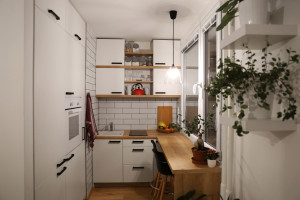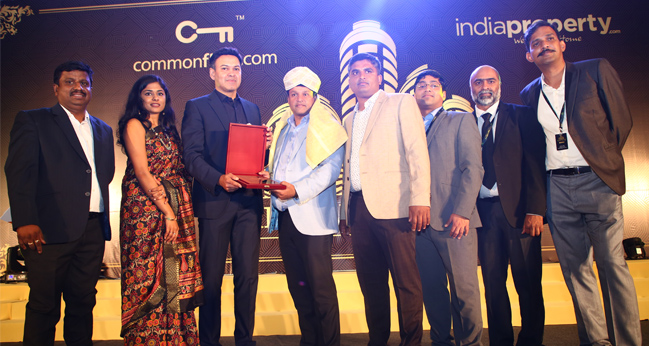Development Control Regulations (DCR) in India
Development Control Regulations are a set of rules that are planned to ensure the proper and effective development of a city, as well as the general welfare of the public. Regulation is necessary to ensure planned development. It depends on a “plan-led system” whereas development plans are made and the public is consulted.
It is a mechanism that controls the development and use of land. This involves the construction of new buildings, the extension of the existing ones, and the change of use of the building or land to another use. Developing new houses/industrial buildings/shops are important for supporting economic progress. At the same time, it is also necessary to protect or improve the quality of towns, villages, countryside, etc.
Under the DCR, the Metropolitan Commissioner is the supreme authority for review of its provisions and his decision would be final. The Metropolitan Commissioner could use his power to approve provisions of these regulations excluding the provisions associated with FSI.
What are the motives of the Development Control Regulations (DCR)?
The motive of Development Control Regulations (DCR) is that any approved plan is implemented by individuals and by corporate or by public-sector developers and thus all new developments should adhere to the terms of the plan.
Why is Development Control Regulations necessary?
Development Control Regulations are a must for every growing city because the area immediately beyond the city limits is often a source of health risk to the city and generally under no strict control of the effective local authority.
What are the objectives of the Development Control Regulations?
-
To stop the unfavorable demand and misuse of land.
-
To assist private interest along with public interest in all phases of development.
-
Development control is legal in nature and the planning authority has the power to punish the defaulters.
-
To control and limit overcrowding on land.
-
To control the private development as per the required rules in connection to public safety, health, and convenience.
How many types of Development Controls Regulations are there?
-
Town and Country Planning Act
-
Building Bye-laws
-
Land Acquisition Act
-
Zoning Regulations
-
Slum Clearance Act
-
Periphery Control Act
How is Zoning Regulations dealt with?
-
Allotment of land for special purposes.
-
Limitation on the use, construction, and height of the building.
What are the key objectives of Zoning?
-
Zoning proves to be a useful means for making any town planning scheme effective and successful.
-
Zoning supports proper coordination of various public amenities such as road, electricity, drainage, water connection, transport facilities, etc.
-
Rezoning for better uses of land by amending their zoning laws can be possible.
-
The town planner gets enough opportunity for designing the future growth and development of the town.
What do the Bye-laws say (Building Bye-laws Updates 2019)?
-
Rights of residents
-
Freedom to builder or landlord
-
Rights of neighbor
Where is building Bye-laws applicable?
-
New construction
-
Additions and modification to buildings
-
The need for open space
What are the objectives of building Bye-laws?
-
The building bye-laws stop reckless development without any similarity to the development of the area as a whole.
-
To give open spaces, noise, air breeze, smoke, and manage safety against fire, etc.
-
To control land development keeping in mind the bye-laws.
-
It becomes more accessible to pre-plan the building activities and provisions of bye-laws, give directions to the designing architect or engineer.
-
Material types of control
What are the controllable factors under DCR?
Below are the controllable factors under DCR:
Floor Space Index (FSI)
It is the ratio between the total built-up area and the plot area available. It is authorized by the government for a particular locality. It principally describes the ratio of the total covered area of construction to the total plot size. It is sometimes termed as floor space compensation ratio (FSR), floor area ratio (FAR), site ratio or plot ratio. FSI rules are usually based on the National Building Code.
As per the new DCR rules, balconies, stairs, voids, flower beds, and corners are calculated in FSI and to compensate for the loss, the government has allowed compatible FSI up to 35% for residential and 20% for commercial developments.
Parking space
There is a specified space for parking in residential, commercial and educational institutions as per the set laws in different States. However, as per the norms, the ideal parking size should be a minimum of 2.5 x 5.5 sq.m. (Motor Vehicle), 1.2-3 sq.m. (2 Wheeler), 3.75 x 7.5 sq.m. (Transport Vehicle).
Size of plots
As per the DCR, the size of plots appropriate for residential development varies according to the income level of residents. The ideal size conditions under DCR are -
1. Low-Income Group (LIG) – 135-180 sq.m.
2. Mid-Income Group (MIG) – 216 to 360 sq.m.
3. High-Income Group (HIG) – 486 to 972 sq.m.
Structural design and services
The architectural design of a building should be executed as per the directed norms of the National Building Code of India. The building must hold facilities of plumbing (for toilet and drinking), protection from electricity, electrical installation, air-conditioning, lift, etc.
Lifts
A building with a height of more than 13 meters must have a lift from the ground floor. The minimum capacity of the lift should be 6-persons.
Fire Safety
A building that exceeds more than three floors needs a certificate of approval from the Fire Department. Besides, every floor with more than 150 sq.m. of floor area and a capacity of 20+ people should have at least two doorways, along with a staircase for the fire exit.
Development Control Regulations in India’s Top Cities
Development Control Rules, Delhi
To make Delhi’s Development Control Rules tighter, the ministry of housing and urban affairs has proposed an amendment in Unified Building Bye-Laws for Delhi 2016, which would now hold responsibility on all contractors and even site supervisors for defects in a building built on a plot size of 750 sq.m. and above. This revision would mean that every architect would now have to take ten-fold professional liability insurance to cover for such defects.
The Unified Building Bye-Laws 2016, which was published in March 2016, had put this “latent defects liability” condition only for plots with 20,000 sq.m.and above. It means a 20,000 sq.m.plot would house a 35-40 storey highrise building with 3-flats on each floor.
To check the complete rules, click HERE
Development Control Rules, Mumbai
In January 2012, the Maharashtra Government had announced amendments to the Development Control Rules for Mumbai with the prime objective of bringing in transparency and reducing temporary and discretional decision-making at different levels. The new rules mean pricing based on maximum available FSI, reducing the risk that was largely accepted earlier with regard to excessive saleable area.
Under the new DCR, areas for balcony, flower-beds, stairs, terraces, corners, voids would be counted in the FSI but these were not considered in FSI calculation earlier.
With the new rule, plots measuring over 2,125 sq.m.(22,873 sq.ft.) will now be permitted to build more, vertically. As per the new regulation, the Brihanmumbai Municipal Corporation (BMC) will calculate the development potential of a plot on its gross area, without decreasing the area reserved for recreational purposes. The developers will now be able to build more apartments in a building with a proportionate increase in the open spaces in the building.
Every plot, where a residential structure is coming up will have to reserve 15% of land for open spaces known as recreational ground. Earlier, according to the 1967 and 1991 DCR, when the BMC calculated the development potential of a plot, the reserved 15% plot was deducted. This resulted in a lesser number of flats being constructed. However, the BMC will determine the development potential including the reserved space now with the new rule. Resulting in permitting builders to develop more in the specified Floor Space Index or FSI.
To check the complete rules, Click HERE
Development Control Rules, Karnataka
The Karnataka Govt. has amended the zonal regulations of the Revised Master Plan 2015. Under the amendments, the state govt. has reduced the mandatory permissions needed for building commercial complexes in plots measuring up to 20,000 sq.m.and exempted select common areas from the floor area ratio rules in both, residential and commercial high-rise buildings.
The state govt. has changed the floor area ratio rules for residential as well as commercial buildings. This means those common areas such as fire control rooms, electrical panel rooms, pump rooms, AC plants, security or CCTV rooms, generators, solid waste management facilities have been removed from the range of FAR norms.
According to the new rules, the height of the building will be calculated excluding structures above the terrace floor giving services such as solar panels, staircase headrooms, lift machine rooms, overhead tanks, parapet walls, chimneys, and other architectural features cover. Also, the new rules have allowed covering the internal open space on top, to block rainwater from entering the building but the covering cannot be a stable structure.
Those buildings that fall within a 1-km radius on either side of the metro corridor will have to allow less parking space in buildings. The amendment clarifies that space for one car needs to be provided for a built-up area of 75 sq.m and buildings outside the 1 km zone, parking space for a single car needs to be marked for a built-up area of 50 sq.m.
To check the complete rules, Click HERE
Development Control Regulations, Pune
Pune Municipal Corporation has approved new development control regulations permitting higher floor space index (FSI) in certain categories. The move is beneficial for small developments in non-congested areas.
IT Sector
Maximum permissible FSI of 3 to develop IT parks and additional FSI could be used by paying a premium to the local body. IT parks built on two hectares or less need to maintain amenity space. A fine equal to 0.3 % of controlling ready reckoner value of the built-up area will have to be paid if the place reserved for IT is used for non-IT purposes.
Government Housing
The rule proposed up to FSI of 4 instead of 1 for the development and redevelopment of housing for the state government and civic employees.
As per the new regulation, mixed-used developments of residential and commercial nature would be permitted on a residential plot in TOD zone.
PMC has made it compulsory for housing societies to have solid waste management, hostels, commercial establishments, hospitals with a total built-up area of 4,000 sq.m or more.
A minimum FSI of 1.50 has been granted for the development in overcrowded areas while the road width is 9 meters. Also, a maximum of 3 FSI will be allowed for development for road width 30 mt and above. 1.10 FSI will be permitted for non-congested areas.
To check the complete rules, Click HERE
Development Control Rules, Chennai
The State government has issued a Government Order, revising the 2nd Master Plan of the Chennai Metropolitan Area and the Development Control Regulations in other parts of the State. This is only for residential buildings that will reduce the cost of housing for low-income groups.
The Tamil Nadu government has increased the maximum Floor Space Index (FSI) for multistoried residential buildings from 2.5 to 3.25.
According to the amended terms on ‘premium FSI’, a multistoried residential building will get the maximum FSI of 3.62 on the payment of premium charges. The maximum FSI for specific buildings in the residential category and ordinary residential buildings will be 2.
The Development Control Regulations 26 of the Chennai Metropolitan Area has been revised to change the FSI for special buildings also from 1.5 to 2 for continuous building areas.
Likewise, the Development Regulations 27(3)D of the Chennai Metropolitan Area has been revised.
The Chennai Metropolitan Development Authority (CMDA) will also allow premium FSI over and above the usually permissible FSI subject to a maximum of 1.62. Now, the maximum FSI for a multistoried building will be 3.62 using premium FSI.
For a road width of 18 meters, the premium FSI permissible will be 50%. For roads with a width of 12-18 meters, the premium FSI permissible will be 40% and for roads with a width of 9-12 meters, it will be 30%.
To check the complete rules, Click HERE





